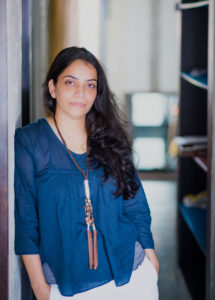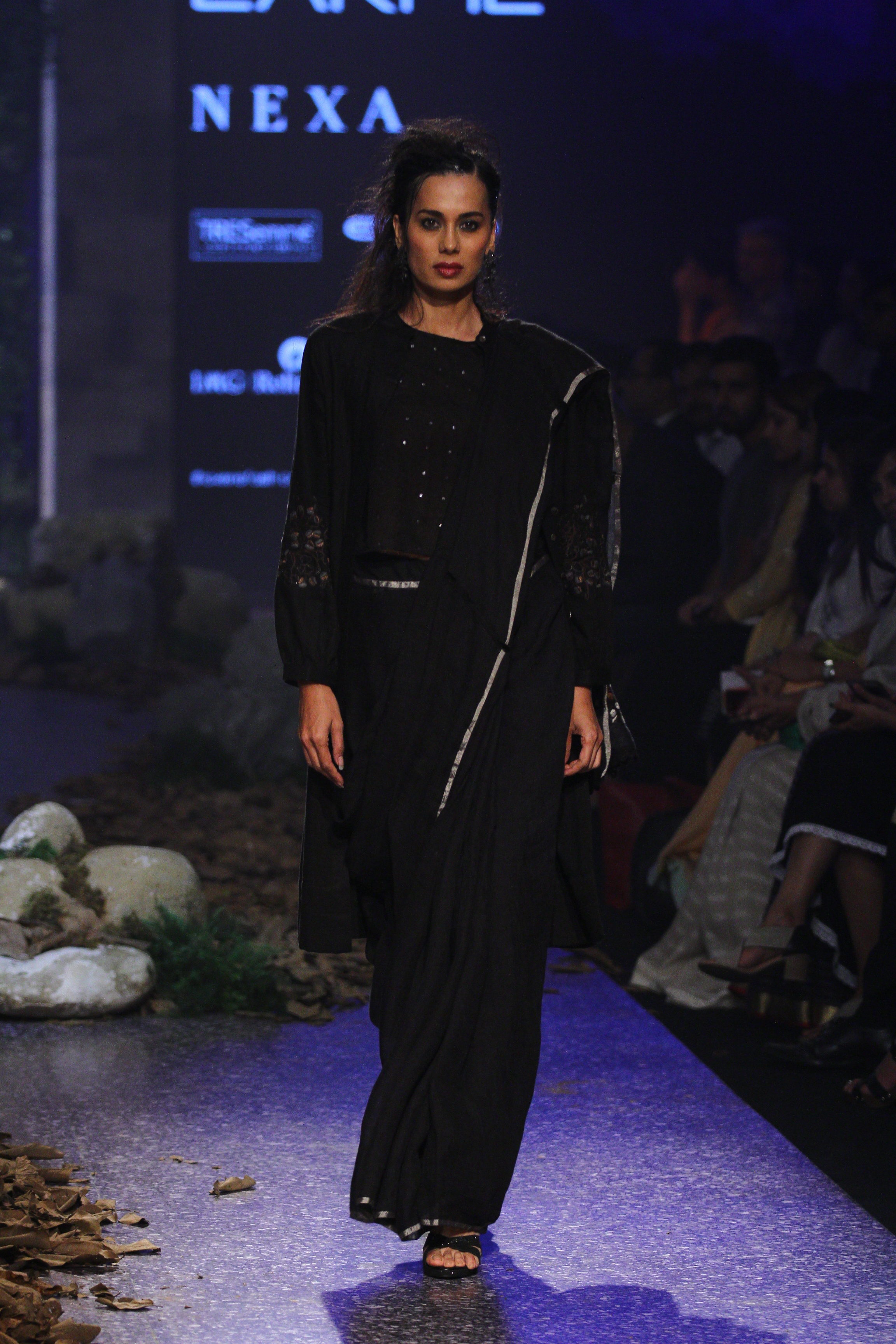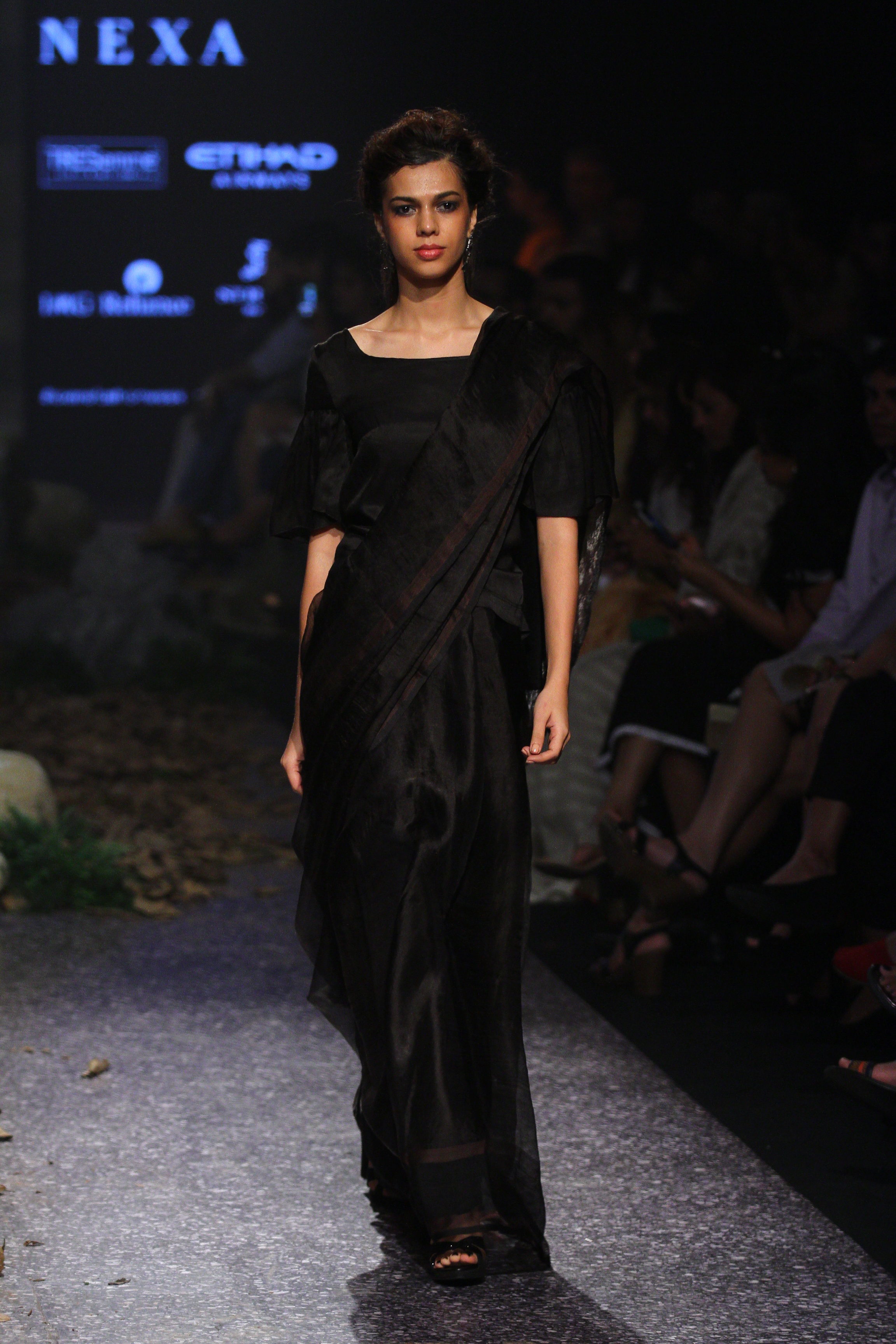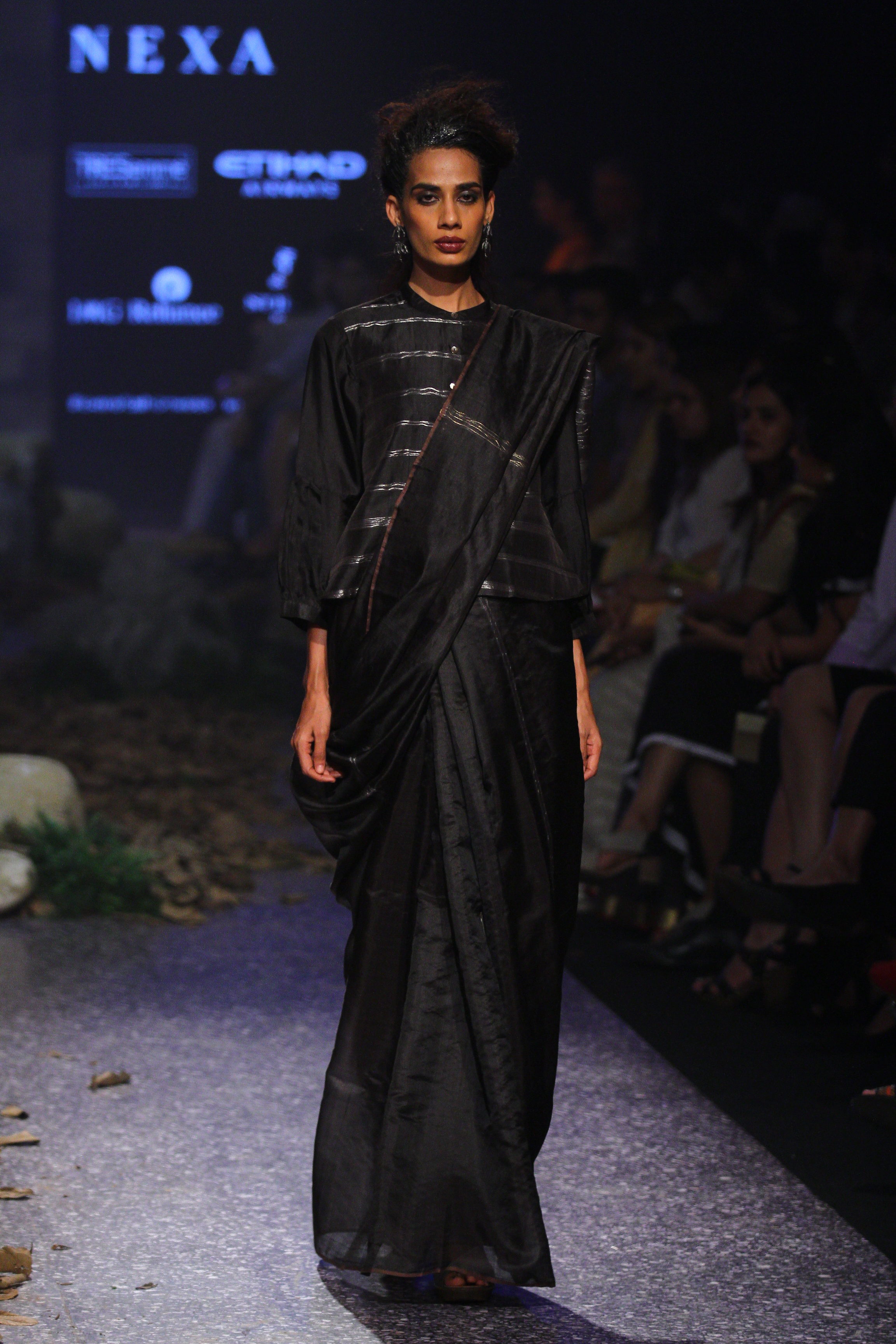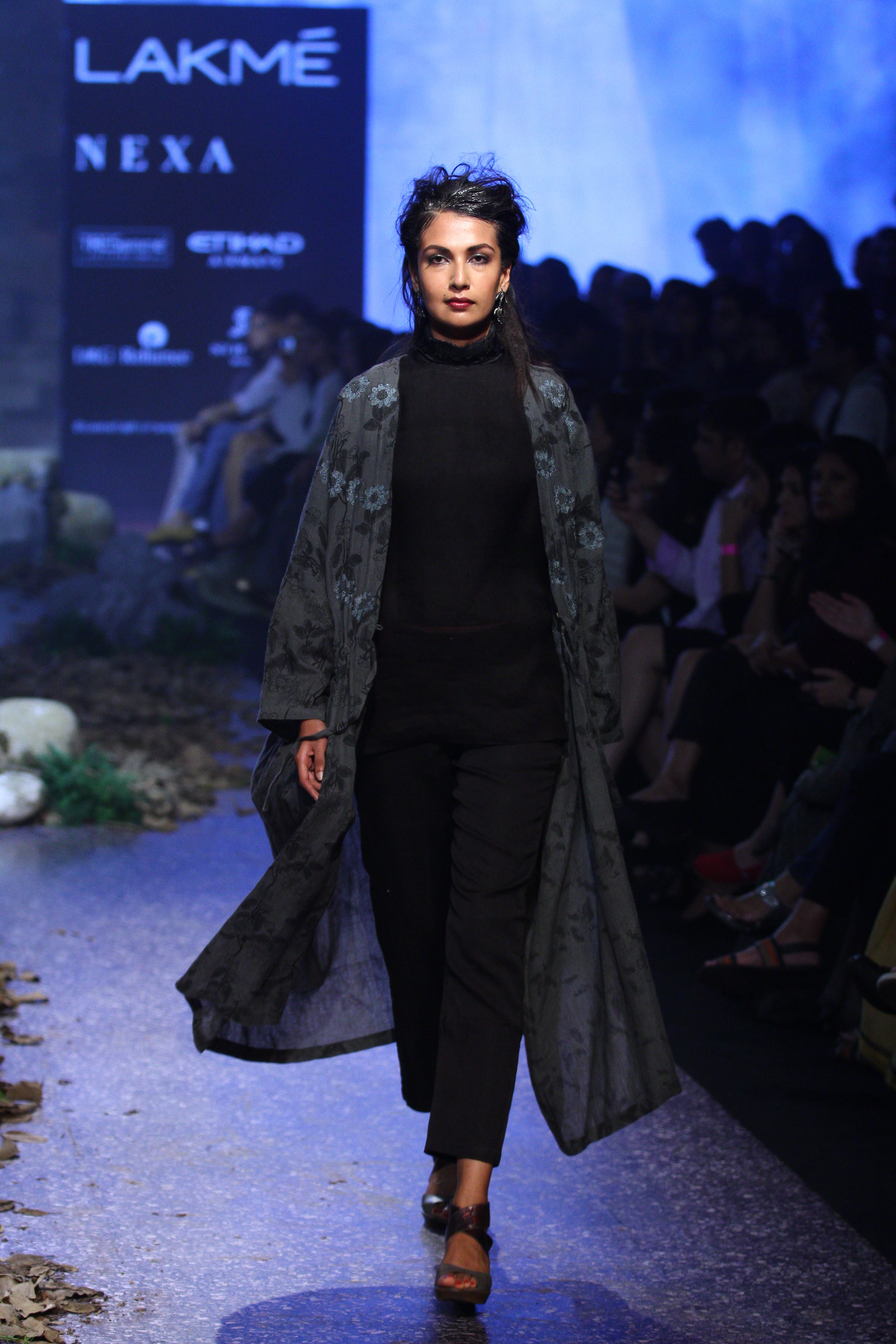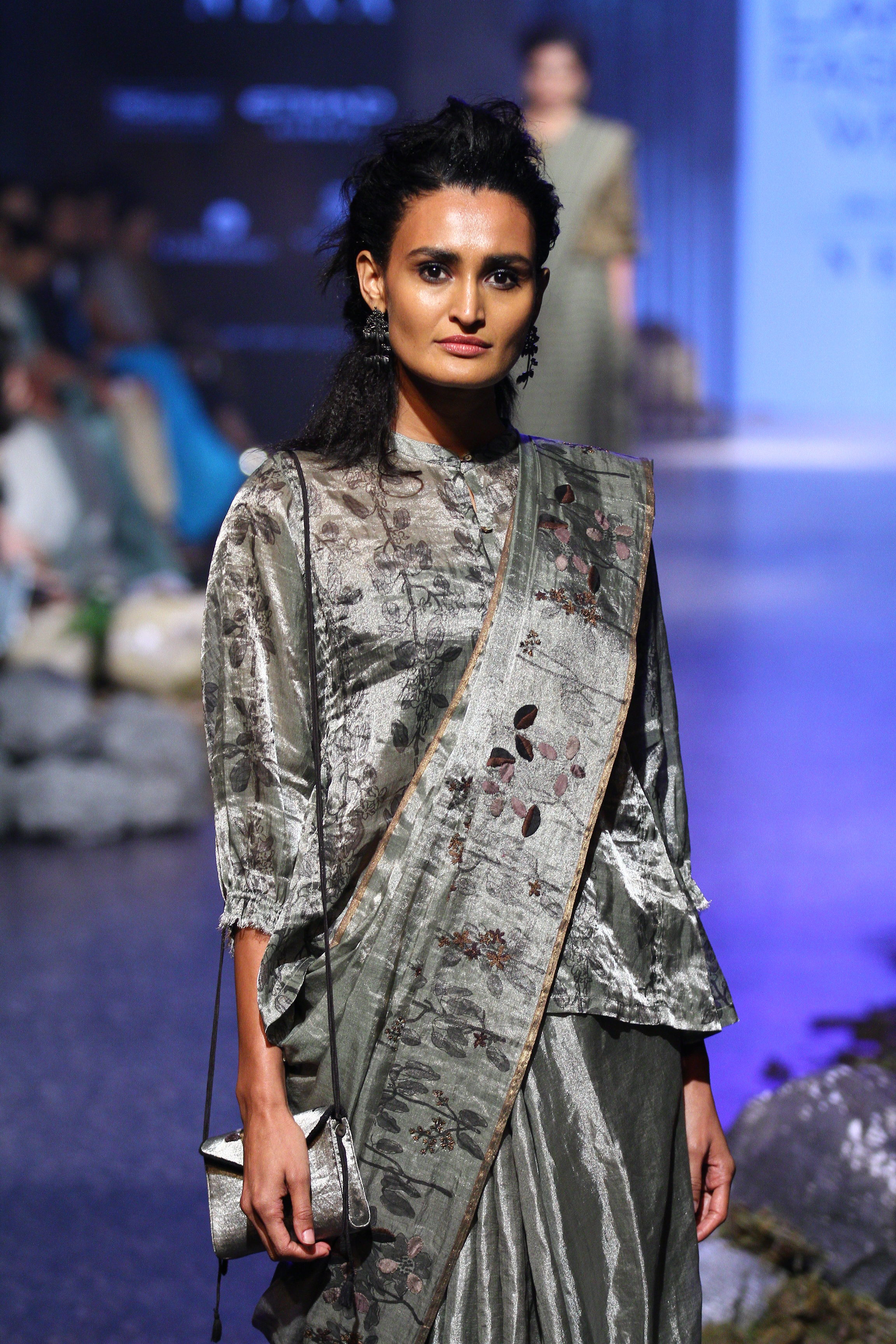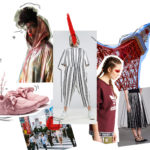- August 31, 2017
- FASHION + SHOPPING
Not Another Interview – Anavila Sindhu Misra
As a part of our series ‘ Not Another Interview,’ we met with designer Anavila Sindhu Misra before her Lakmé Fashion Week show to talk about the evolution of sarees, sustainable fashion and a lot more.
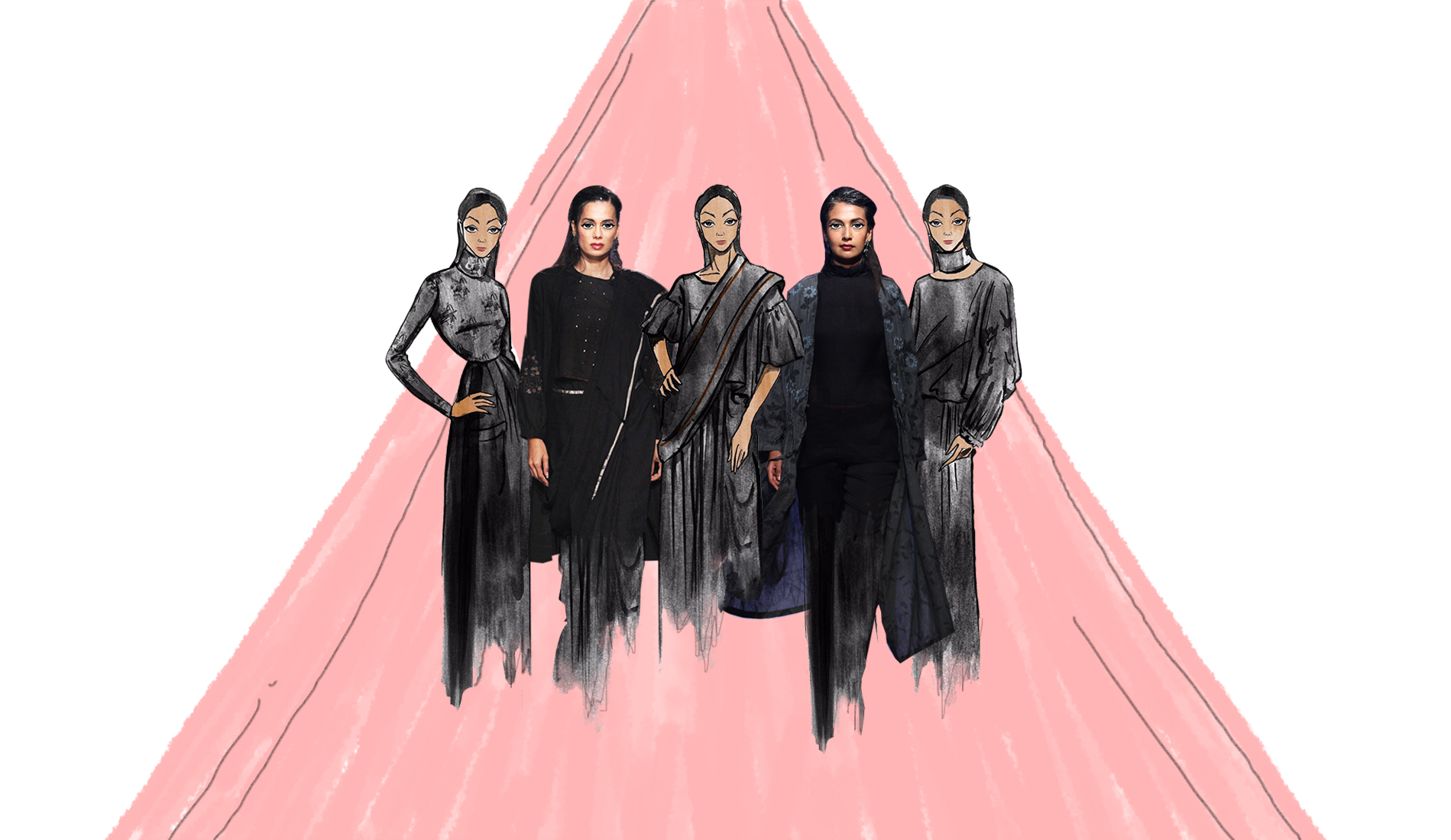
We caught up with Anavila Sindhu Misra, the soft-spoken and a very determined woman behind the eponymous label Anavila that brought back old world simplicity and charm to sarees. Usually, Not Another Interview sessions are done LIVE on our social media, but due to technical restrictions and time factor, this was done over coffee, in the privacy of her room at the St. Regis hotel in Mumbai. Just hours before her Lakmé Fashion Week winter festive 2017 show. Most often, this close to their shows, designers and their teams are a bundle of nerves, but not Misra. She was at ease, comfortable and confident. Here’s what she had to say —
Charu Gaur: Who’s an Anavila woman?
Anavila Misra: See, I mostly design for myself (laughs) and for every woman who likes to be comfortable and at ease in what she’s wearing. An Anvila woman loves clothes and fashion but comfort comes before everything else for her. Something that takes an effort to wear doesn’t appeal to me and I believe that my customers don’t want that either.
CG: You have created a niche for yourself with something as common as a saree in an extremely crowded and competitive Indian wear market. How did you manage that?
AM: It’s been a very gradual, very smooth, one-step-at-a-time journey you know. I’ve never rushed into anything. We’ve grown slowly and organically. Maybe because people found what we do and the way with which we pay attention to them charming in a way. Maybe women in India were ready for something like this.
CG: Considering that a saree is almost like our national garment, comfortably-draped cotton or light silk saris have been a staple since time immemorial, but on the runway, it’s a different story. Isn’t it quite interesting that today a brand can create a niche, a language with minimal sarees (almost as a throwback) in the midst of heavy-duty Bollywood-fication of the garment, with bling being the keyword?
AM: I guess people felt tired of seeing what you are describing on the runway. It was too much of the same thing everywhere. I would also say that you know, intrinsically if you notice the history of our textiles… we have so many textiles, so many clusters, and so many weaving styles. It’s because we’ve been doing this for a very very long time and we have adapted to many other influences like Mughals and so many other people coming in. Plus, with the evolution of pop culture, the industry complied with changing sensibilities. I have simply gone back to our original language. It’s the language taken from the looms, I guess, that’s why a lot of us resonate with it.
CG: What’s your design process?
AM: It almost always starts with an idea —what do we want to do going forward? So after the mood is set, comes the colour story, then textures, and finally, it’s about putting different shapes and forms together.
CG: I have felt your sarees, how do you achieve that beautiful texture with linen?
AM: The first time I told my master weaver, “let’s make a saree with linen,” he was like “are you serious?” Then he said, “okay we’ll try!” They worked really hard to make it happen because you have to set the loom in a certain way, picks and ends should be in a particular order, and the saree needs to be woven loosely so that it falls and drapes nicely otherwise linen can be very stiff. There are a lot of permutations and combinations that we play with. It’s all just a combination of my vision with the skills and determination of my weavers.
CG: That goes into my next question, do your weavers and workers know how people react to clothes they make, and how the label is perceived?
AM: They’re all on social media —be it Whatsapp, Instagram or Facebook. So they’re very very aware. They themselves show me photos of Kalki (Koechlin) and Konkona (Sen Sharma) wearing our sarees. They tell each other, “Oh look, this person is wearing the saree you weaved.” It makes them very happy! They feel excited to be the story of the label. So now when I tell them “look, the whole world is now working with linen and we need to experiment and move forward,” they understand that instantly because of the exposure.
CG: Sustainable fashion vs seasonal cycles — are the two contradictory? Or is it possible to create a good balance?
AM: I’m not sure if seasons make such a big difference here. For example, in Bombay, unless it’s monsoon it’s all the same. People want to change their look from time to time and for us, it’s business – we need to update stores, we need people to buy more clothes. Whereas sustainable fashion is more about being able to use the same pieces over and over in different ways. But I think there can be the right balance. Let’s say you pick up a beautiful piece in a nice cut, something comfortable and then you can always layer or accessorise them interestingly.
CG: But how do you, as a designer, create sustainable collections?
AM: It’s a responsibility for me to start thinking about the entire cycle – from the time we design to the time it’s reached your wardrobe. How are you using it? Are you washing it correctly? I think we are going to do this entire exercise more vigorously.
CG: Last question, what should we expect from ‘Blur,’ your winter-festive 2017 collection?
AM: Our focus from this collection onwards is going to be on design more than the textile or the fabric itself. We’ve been all about textiles so far and we will continue to focus on that but this time onwards you will notice the design or the silhouette first. We’ve added a modern, international feel to Indian handlooms. We’ve also created semi-formal and formal evening wear. Oh and black, there will be many shades of black with hints of gold and silver.
—
Thank you for reading this and being a part of the ‘Not Another Interview’ journey with us. The reason why we do this is so that we can have heart-to-heart conversations with people with who have a different voice and are not scared of speaking out loud about fashion/ style/ travel/ pop culture etc. See the previous interviews with Anita Dongre and Nikhil Thampi.
Charu Gaur is the founder/editor of Runway Square. Don’t ask her to meet over tea or coffee. She’s currently working on her selfie game which recently went for a toss. Tips are welcome.

